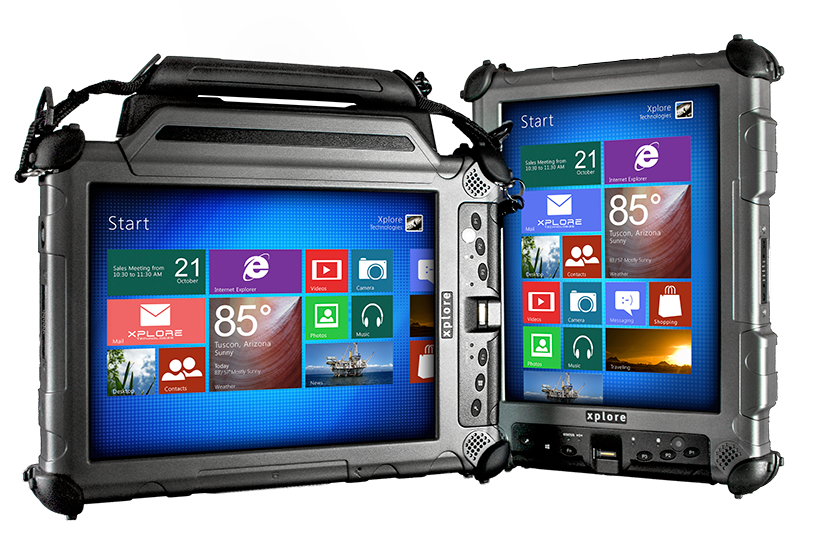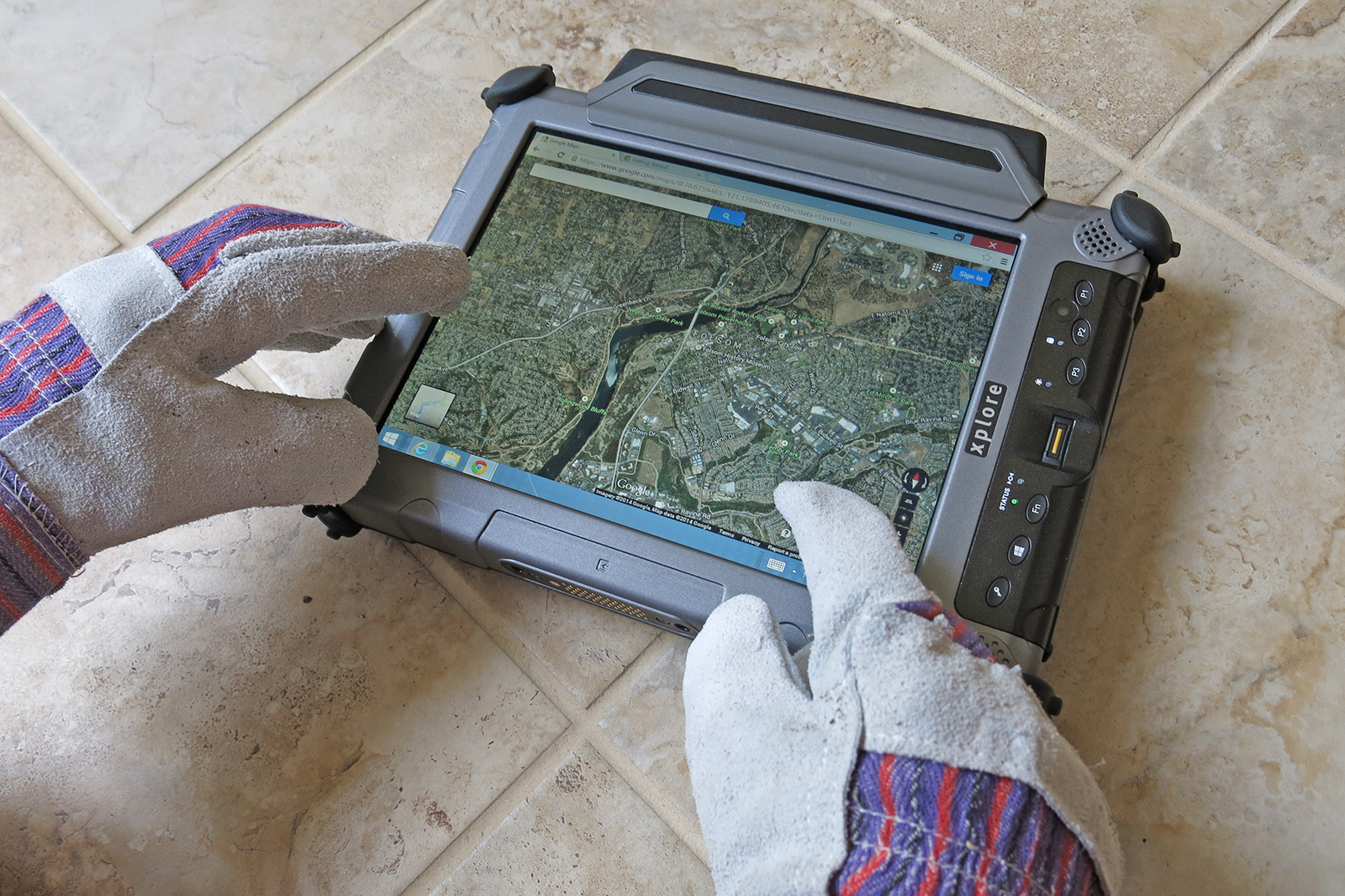
Utilizing hazardous area tablets and the latest data management software to help workers in the field optimize their processing time
This article by Cliff Wahlstrom, R.E.T. in association with Oil and Gas Product News discusses how handheld industrial mobile devices, specifically the latest generation of intrinsically safe tablets and smart phones such as the Ultra Rugged Xplore XC6 [-34°C], can be used to dispatch, manage and maintain oilfield rental equipment delivering real cost and efficiency benefits.

There’s lots of buzz about smart phones, tablets and other technologies along with the “apps” that fuel the tremendous growth in the consumer market. And it didn’t take long for industry to realize the potential of handheld technologies to change the way they do business. Understandably, the first business applications were centered on communicating with consumers to take advantage of the mobile devices that people now carry around with them. The next steps are developing; companies are implementing internal and business-to-business applications that directly affect the way they manage their day-to-day operations.Some could argue that the move to mobile devices, such as iPads, is merely the next step in a technology progression, but we think it’s different this time. Mobile technology, coupled with Internet, cellular and GPS capabilities, has progressed to the point where it can become an integrated part of service delivery that adds substantial value to the entire process. It far surpasses even the capabilities of laptops in the field because of the increased mobility, GPS and photo capabilities, as well as the ease of developing custom apps and the ability to build tablets that are not only intrinsically safe but can also handle the most demanding industrial environments. At Clean Harbors we think that mobile technologies will revolutionize many parts of our business from container management to equipment dispatching, fleet management and virtually every aspect of asset and service management.
Saying goodbye to paper
Industrial mobility devices, specifically the latest generation of intrinsically safe tablets such as the Xplore XC6, can be used to dispatch, manage and maintain oilfield rental equipment delivering real cost and efficiency benefits to both the company providing the equipment and to the customer.Oilfield equipment rental is a complicated asset management process that includes preparation, dispatch, inspection, maintenance, relocation, recovery and reconditioning of equipment – in other words, lifecycle management designed to give the rental company return on its investment while providing both attractive costs and reliability to customers.
In order to accomplish this, extensive control procedures have been developed over the years. Unfortunately, due to the onsite deployment of rental equipment, the management process generally relies on paper forms or standalone applications on laptops or early generation handheld devices. So what happens is that a technician fills out a form in the field or office, then a supervisor or manager reviews it with the technician; some of the important data may be manually entered into a database and the original report is filed and that’s where it ends.
Many equipment suppliers, such as Clean Harbors, conduct extensive field maintenance programs. They send technicians out to the equipment sites regularly to inspect high-value equipment, such as centrifuges, using a checklist as a guide and perform routine maintenance.
A paper-based approach is unnecessarily complex, expensive and prone to errors. It also makes it difficult to track the asset over its lifecycle, identify performance issues, conduct preventive and predictive maintenance and manage assets across a customer account.
With handheld mobile devices technicians can do inspections and, if they have connectivity, save and submit the updates in real time back into a centralized system that shows the current state of the equipment. It also allows the supplier to build a history of inspections over time and can be used to print, or better yet, generate and email a service report to onsite management.
Maintenance management system ties it together
The industrial mobile device is the gateway into a computerized maintenance management system (CMMS) that enables the supplier to have real-time visibility into the state of the equipment. They can look at when the inspections were done on the equipment, analyze the operating performance history, compare it to other equipment operating under the same or different conditions, and evaluate lifecycle performance. This is an unprecedented amount of information that can increase efficiency and reliability – all automatically without tying up the technician or office staff with routine administrative work.
A CMMS also gives supervisors and managers instant access to the analytics in highly targeted and easy to read reports. Customized reports also can be shared with customers. Integration with the CMMS facilitates preventive and predictive maintenance by enabling the system to automatically issue routine workflow notifications to the individual technicians as they make their rounds and to alert them to special maintenance work requirements. The most sophisticated systems are tied into inventory and procurement systems to pre-order and stock technicians’ trucks. In the past, this would be handled by paper forms, phone or email with little verification that requests had been received.
Another advantage of the system is that it facilitates failure analysis. Since data is directly inputted into the CMMS it’s easy to have the system highlight recurring problems on an individual piece of equipment or for a cross section of equipment due to persistent problems or operating environment issues. Using failure analysis, a recurrence would notify a maintenance manager to look into the situation. In the past, these situations would not be detected until the equipment was recovered and put through a turnaround in the shop. Similar situations in different operating areas were rarely identified unless the circumstances were conveyed by word of mouth.
Combined technologies adds capabilities
 Industrial mobility devices offer additional benefits through the integration of other technologies. Customized equipment forms can be pre-loaded onto the devices so that technicians have the exact form for each piece of equipment. When forms are added or edited, the techs will get real-time updates each time they sync with the servers. This ensures that technicians are directed to inspect all critical sub-systems and facilitates consistent reports.
Industrial mobility devices offer additional benefits through the integration of other technologies. Customized equipment forms can be pre-loaded onto the devices so that technicians have the exact form for each piece of equipment. When forms are added or edited, the techs will get real-time updates each time they sync with the servers. This ensures that technicians are directed to inspect all critical sub-systems and facilitates consistent reports.
Fully interactive equipment manuals, even including video demonstrations of repair techniques, now can be included on the devices to guide technicians through a repair process. True, this capability has been available on laptops for some time; however, an iPad or a ruggedized tablet is more portable and can be propped up virtually anywhere to give guidance.
The potential to add GPS tracking capabilities allow rental companies to accurately track and inventory equipment movements and deployments across large geographical regions.
Photo capabilities that are now commonly available on handheld devices integrate another valuable technology. By using the built-in camera to scan the equipment’s barcode the technician can access the unique record to call up the repair and performance history, obtain the correct inspection form and be notified of any workflow order associated with that particular piece of equipment.
A second use is to photograph components. Until now, if technicians needed to photograph equipment they had to use digital cameras or smart phones and then email or separately store the image. Now, with integrated image capture using a tablet, technicians can add photos directly into the equipment record. This is extremely valuable when consulting with offsite resources, such as manufacturer support personnel, to record damaged equipment or parts that must be replaced. Photos can also be used to document equipment condition at time of deployment, recovery and periodically while in use.
Pictures are also helpful when discussing with onsite customer management why and when equipment must be swapped out or taken off line for repair due to either operational or safety concerns.
By utilizing industrial mobile technologies rental companies can be more proactive in their equipment maintenance and management in order to give oilfield customers a more efficient and reliable rental fleet. Advanced technologies demonstrate that the rental company is investing in the care of its equipment and is striving for maximum up-time. The additional data and failure analysis tools that mobile technologies front end will help customers operate more efficiently with the knowledge that the equipment they’re getting will perform as expected.
Learn more about MicroWatt Industrial Mobility Devices
Ref: Oil and Gas Product News
Original Article By: Cliff Wahlstrom, R.E.T.
Article Link: http://www.oilandgasproductnews.com/

